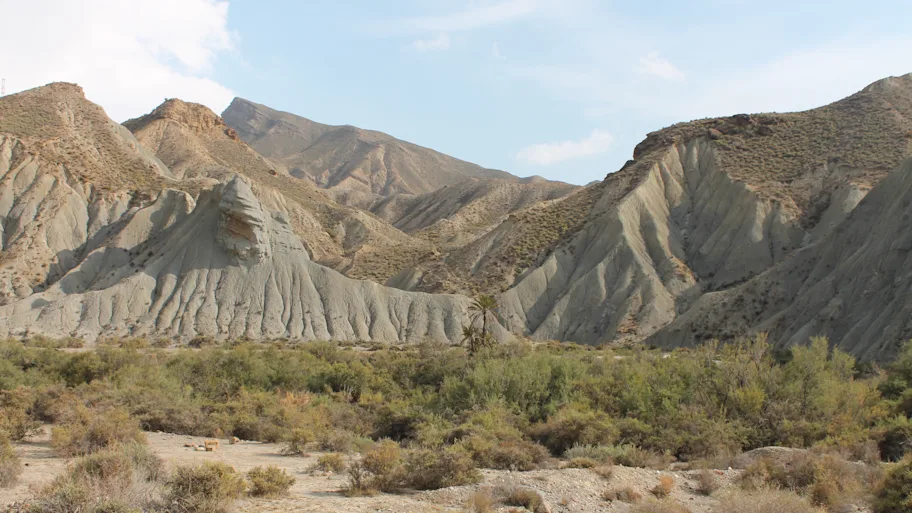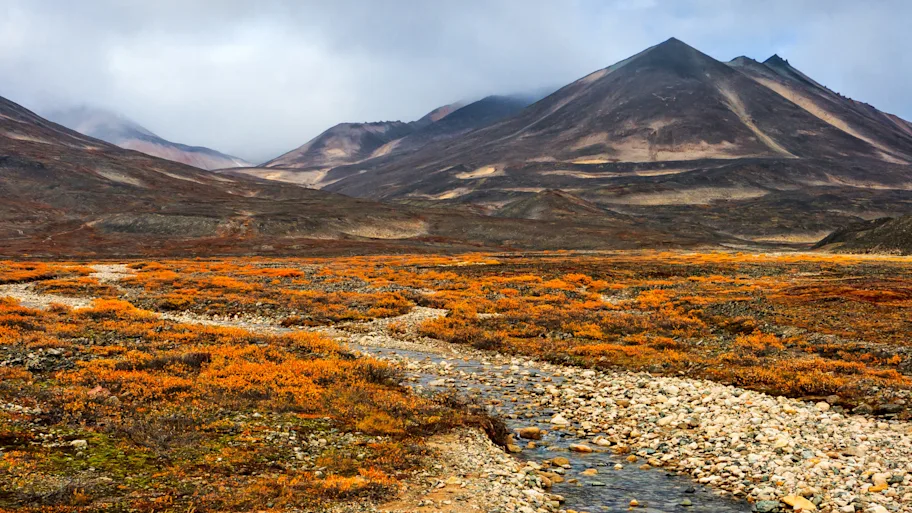
- Science news
- Environment
- Did Humans Create the Sahara Desert?
Did Humans Create the Sahara Desert?

New research challenges the idea that changes in the Earth’s orbit triggered Sahara desertification.
— Nick Fraser, Journal Development Manager, Frontiers in Earth Sciences
The Sahara today forms one of the largest and driest expanses of land on Earth. Yet between 5,000 and 10,000 years ago, a period of time commonly referred to as the ‘African Humid Period’, both the climate and ecosystem of the Sahara were dramatically different. Instead of an arid desert landscape, the Sahara was characterized by lush and diverse vegetation, a consequence of monsoons and increased rainfall over the northern Africa landmass.
The ending of this unusually wet period in the Sahara’s history, and transition to modern-day conditions, has long been a target for scientists trying to understand climate and ecological tipping points; until now, most studies have pointed to changes in the Earth’s orbit or natural changes in vegetation as the major driving forces. A new paper in Frontiers in Earth Science by archaeologist Dr. David Wright, from Seoul National University, South Korea, challenges this view and suggests that humans may have also played an active role in driving climate change in this period.
“During the African Humid Period the Sahara had a completely different vegetation regime” explains Wright. “All of the plants that are found in the Sahara today were there, but you also had plants that are found in the Sahel, the semi-arid zone to the south of the Sahara, and even types of plants that are found in the Congo rainforest”. This so-called ‘Green Sahara’ was also capable of supporting large animals – rock paintings made in northern Africa dated to this time period depict crocodiles, elephants and giraffes, animals that could not be sustained in the Sahara today.
The wet conditions also had an important influence on human sustainability and cultural development, allowing humans to thrive in foraging and fishing communities. “Unlike a lot of other places, people in the Sahara became very sedentary, there was really no need for agriculture”, says Wright. “One of the dietary staples of people living in that period was Nile perch, an enormous 150 kg fish, and this was only possible due to the huge Saharan lakes which could support abundant fish and fishing populations”.
But such favorable conditions didn’t last. Although the exact timing and spatial distribution is still under debate, there is consistent agreement in geological and archaeological records that beginning approximately 8,200 years ago, the Sahara began a trend towards more and more arid conditions. Over the course of the next 3500 years, the landscape of northern Africa shifted from a diverse, wet ecosystem to conditions similar to those found today.
The underlying causes of this drying and desertification has previously been attributed to subtle changes in the Earth’s orbit, which in turn influenced atmospheric weather patterns and led to a reduction of the amount of rainfall in northern Africa. But Wright, whose scientific research has led him to exploring Neolithic-age archaeological sites all over the world, suggests that this is not the full picture. “In East Asia there are long established theories of how Neolithic populations changed the landscape so profoundly that monsoons stopped penetrating so far inland”, explains Wright, also noting in his paper that evidence of human-driven ecological and climatic change has been documented in Europe, North America and New Zealand. Wright believed that similar scenarios could also apply to the Sahara.
To test his hypothesis, Wright reviewed archaeological evidence documenting the first appearances of pastoralism across the Saharan region, and compared this with records showing the spread of scrub vegetation, an indicator of an ecological shift towards desert-like conditions. The findings confirmed his thoughts; beginning approximately 8,000 years ago in the regions surrounding the Nile River, pastoral communities began to appear and spread westward, in each case at the same time as an increase in scrub vegetation. “Pastoralism and agriculture are addictions. The more you use it and rely on them, the more you need them”, says Wright.
Growing agricultural addiction had a severe effect on the region’s ecology. As more vegetation was removed by the introduction of livestock, it increased the albedo (the amount of sunlight that reflects off the earth’s surface) of the land, which in turn influenced atmospheric conditions sufficiently to reduce monsoon rainfall. The weakening monsoons caused further desertification and vegetation loss, promoting a feedback loop which eventually spread over the entirety of the modern Sahara. Central to this cycle was the role that fire played in creating the new ecological circumstance. Although there is evidence for the presence of fires throughout all of human history, wild animals will not go onto a newly burned landscape because they would be easy targets for predators. However, pastoralists direct and protect their animals onto the newly regenerating landscape, altering the “ecology of fear.” This encourages scrub growth at the expense of grasses.
There is much work still to do to fill in the gaps, but Wright believes that a wealth of information lies hidden beneath the surface: “There were lakes everywhere in the Sahara at this time, and they will have the records of the changing vegetation. We need to drill down into these former lake beds to get the vegetation records, look at the archaeology, and see what people were doing there”.
Wright stresses that these approaches can be best achieved through cross-disciplinary efforts between archaeologists, ecologists, as well climate scientists those using computer models to try and understand the Earth’s climate: “It is very difficult to model the effect of vegetation on climate systems. It is our job as archaeologists and ecologists to go out and get the data, to help to make more sophisticated models”.
Despite taking place several thousands of years ago, the implications of humans being responsible for environmental and climatic degradation are easy to see. In the post-Industrial period, human activities have changed their habitats to the extent that geologists have proposed a new epoch, the ‘Anthropocene’, to mark the period of time in which the landscape has been sufficiently altered to be distinctly recognized in the geologic record.
With approximately 15% of the world’s population living in desert regions, Wright stresses the importance of his findings: “the implications for how we change the ecological systems have a direct impact on whether humans will be able to survive indefinitely in arid environments”. However, even as we cross the threshold of ecological tipping points, Wright still sees reasons to be optimistic: “Humans evolved in the context of changing climate, for the last six million years our entire adaptation was to climate change. As we look at the data, there is no avoiding future climate change, it’s going to be severe and cause a lot of ecological stress. But we are ultimately a very creative species, an innovative species, and we are adapted to survive climate change”.






